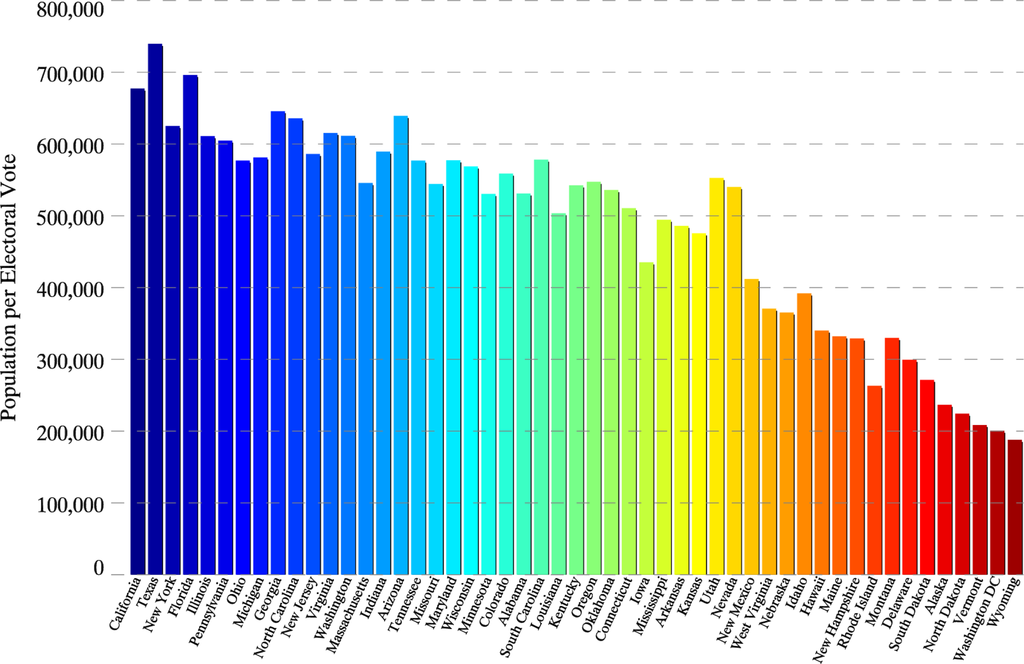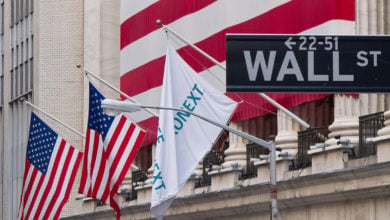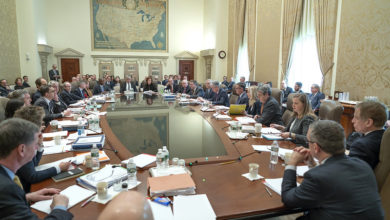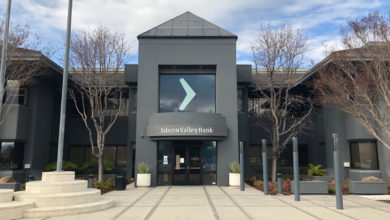Image: Madshurtie / CC BY-SA (https://creativecommons.org/licenses/by-sa/4.0)
Some people are hailing the recent Supreme Court ruling on so-called “faithless electors” as a victory for democracy. However, we should be acutely aware that the Electoral College is actually a firewall against democracy.
The case came from Washington state in 2016 when four electors were fined $1,000 each for refusing to cast their votes for Hillary Clinton who had won the state’s popular vote. The four electors cast their votes for Colin Powell rather than Hillary Clinton in a last ditch attempt to get Republican electors to break from voting for Donald Trump. Washington State then fined them $1,000 under a new state law that requires electors to abide by the popular vote.
The intended goal of the suit was not to escape the $1,000 fine. The scope was larger. The plaintiffs were hoping to settle a 230 year old question: Are electors independent, or can a state force them to follow the popular vote of their state? Their desired outcome was for the court to rule that electors could vote their conscience, bringing into question the entire validity of the Electoral College. Another stated outcome they desired was that the conversation created around such a ruling would lead to “a popular uprising to change the Constitution, ditch the Electoral College and embrace the national popular vote.” (Seattle Times)
The history of the Electoral College begins with the history of the United States, or the “American experiment.” In the bourgeois revolution that shook off the yoke of British rule, the colonial settlers set out to form a new type of state without a monarch.
Originally they envisioned a ‘league of friendship” between the 13 colonies and thus formed the Articles of Confederation that created a weak central government. However, class antagonisms would soon arise from the agrarian population against the state governments dominated by the merchant classes in the north. One stark example was the debt crisis that occurred in Massachusetts which would lead to an open rebellion.
Shay’s Rebellion revealed some of the flaws of the Articles of Confederation. The new U.S. bourgeoisie sought to remedy these flaws and to take advantage of what they saw as the “blank slate” of the North American continent. The landed, capitalist and slave-owner elite convened in 1787 to debate a new form of government; one that would protect their ruling class interests.
Much of the foundation of the Federal Republic was laid out by Alexander Hamilton, James Madison and John Jay in the Federalist Papers, a collection of 85 essays with a central theme of preventing direct democracy, preventing rule by the majority and advocating for a commercial republic (a republic with a foremost duty to protect commerce and property).
The end result was a system of government designed to suppress and prevent democracy. The Constitution specified who exactly could vote (white men with property), how exactly people were selected for various offices, and how representation would be determined.
The Constitution featured the notoriously racist Three-Fifths Compromise which gave unfair representation to the white landed elite in the South slave owning states by counting slaves as ⅗ of a person for the sake of determining representation in Congress.
“The popular vote was first only offered to those who owned property. Even as the property terms were gradually eliminated, Black people and women were totally excluded. Popular elections were only made available for the House of Representatives; U.S. senators were selected by the leading politicians of each state, while the president was selected by an elite Electoral College.” (Eugene Puryear, Revolution Manifesto)
The Electoral College was drawn from the Federalist Papers (No. 10, by James Madison, and No. 68 by Alexander Hamilton), a bludgeon against the popular vote. It was a way to divorce the selection of the highest office of the land from the will of the majority of voters. In fact it has done so five times in U.S. history: In the 1824 Presidential Election, the 1876 Presidential Election, the 1888 Presidential Election, in the 2000 Presidential Election, and most recently in the 2016 Presidential Election.
The anti-democratic intent of the Electoral College can be inferred from the language of Madison and Hamilton in the Federalist Papers
“Hence it is that democracies have ever been spectacles of turbulence and contention; have ever been found incompatible with personal security or the rights of property; and have in general been as short in their lives as they have been violent in their deaths.” (James Madison, Federalist No. 10)
“It was desirable that the sense of the people should operate in the choice of the person to whom so important a trust was to be confided… to men chosen by the people for the special purpose…. It was equally desirable that the immediate election should be made by men most capable of analyzing the qualities adapted to the station…. A small number of persons….” (Alexander Hamilton, Federalist No. 68)

Some people claim that the Electoral College prevents Presidential candidates from solely campaigning in densely populated areas. On the other hand this leads to over campaigning in so called “Battleground States” because of the winner take all method of the Electoral College – only 51 percent of the vote in a state is needed for 100% of the Electoral College votes. This leads to “Electoral College math” in which a candidate can win the popular vote but lose the election.
The Electoral College is not the sole or even greatest obstacle to true democracy in the United States. The United States is a plutocracy, in which corporations are people with rights to free speech and freedom of religion. Corporations are free to pollute the air, water and land of the Earth and advance climate change with the use of unsustainable fossil fuels. Meanwhile, Black people can not even feel safe to walk, run or even sleep without facing racist police terror, and an ever-increasing number of people are living in or near poverty and homelessness as the rich get richer. A government that was truly “of, by, and for the people” would address these and other foundational crises of society.
The Electoral College is designed to protect the U.S. government from excessive influence from the “unruly mob.” It is inherently an undemocratic institution. With the new ruling from the Supreme Court that forces electors to cast their votes in accordance with the popular vote of their state, the Electoral College is nothing more than a formality. This leads us to the question: Why even have it at all?






